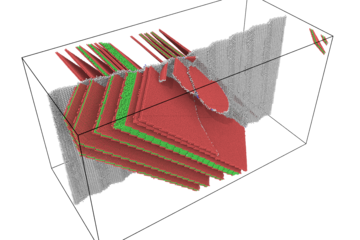All genres
21.
Talk
Effect of surface condition on the bond strength between aluminum and steel joint in cold welding. CETAS 2015, Düsseldorf, Germany (2015)
22.
Talk
“Green” encapsulation of corrosion inhibitors for smart coatings. EUROCORR 2014, Pisa, Italy (2014)
23.
Talk
Nanoscale understanding of bond formation during cold welding of aluminum and steel. 6th International Conference on Tribology in Manufacturing Processes & Joining by Plastic Deformation, Darmstadt, Germany (2014)
24.
Talk
Cyclodextrins for corrosion protection. Gordon Research Conference-Aqueous Corrosion, New London, NH, USA (2014)
25.
Talk
Cyclodextrins for corrosion protection. Gordon Research Seminar-Aqueous Corrosion, New London, NH, USA (2014)
26.
Talk
Controlled release of inhibitors from composite organic coatings: A “green” way of corrosion protection. EUROCORR 2013, Estoril, Portugal (2013)
27.
Poster
“Green” cyclodextrin based smart protective coatings for pH responsive release of organic corrosion inhibitors. EUROCORR 2015, Graz, Austria (2015)
28.
Poster
Controlled release of inhibitors from composite organic coatings: A “green” way of corrosion protection. International Conference on self-Healing Materials, Ghent, Belgium (2013)
29.
Poster
Conducting Polymers for Corrosion Protection - Raspberry like shaped ICP “pigments”. Gordon Research Conference Corrosion-Aqueous, New London, NH, USA (2012)
30.
Thesis - PhD
Cyclodextrin for Zinc Corrosion Protection. Dissertation, Ruhr-Universität Bochum, Bochum, Germany (2017)










